The “Near Blythburgh” Hoard
Museum Talk 25 Febuary 2021
The “Spink Guide to Coins of England” describes Ancient British coins as “the most interesting and varied of all British coins.” This collection, discovered by a detectorist in 2018 gives Halesworth and District Museum a chance to own some fascinating and unique coins of national importance, but we need your help to achieve this. In this article we will explain what makes them so interesting and worthy of your support and what they tell us about Iron Age East Anglia.
These rare nineteen gold coins are amongst some of the earliest coins to be produced in Britain. They are known as “staters” from the Greek meaning “weight” and is a term using to describe ancient coins. It is thought the Celts copied the idea from the ancient Greeks as there are stylistic similarities between the two. Historians believe initially gold coins were minted predominately as war money. They were used to pay troops, pay tribute and in diplomacy. Most people in Iron Age Britain still used barter for everyday trading, or were beginning to use the new low value base metal coins, but gold coins were something for the rich. They were minted by tribal leaders. Gold coins were likely thought of as the local “king’s” money. Recently an alternative view by numismatist John Talbot in a study of Iceni coinage, is that coins could have been used more for trade than had previously been thought. If this is the case these pioneering coins represent a beginnings of a monumental change in British society, the first move away from barter to a cash/coin based economy, something only in our own age, some 2000 years later, we are beginning to witness the end of.
The coins are thought to date from an 85 year period between 60BC to around 25AD. Most knowledge we do have about Britain at this time come from archeology and coins like these, as the only written records we have are fleeting references from Roman sources. The study of the coins identifies rulers and their tribal identity. Experts suggest that a few of these coins have a Kentish (Cantiaci) style to them but are minted by an unknown leader. Two of these coins are of a style or combination not seen before which even the British museum do not have examples of. The majority of the coins in this hoard are attributed or deeply influenced by, the “North Thames” area of the Trinovantes tribe of Essex and South Suffolk. It is thought the coins may reflect a period of unrest started by an invasion by the Cantiaci tribe into the Essex/Thames homelands of the Trinovantes. The Romans tell us at some point the Trinovantes moved their capital from Hertfordshire to what was to become Camulodunium (Colchester) during this period, which may suggest they took back the territory, maybe after some years. This Collection of coins also includes a number that were probably minted by the Iceni tribe of Norfolk and North Suffolk. How do we explain this strange collection of coins and how they ended up in Blythburgh?
One theory could be that Blythburgh and the river Blyth marked a shifting boundary at some point, or a trading or customs/toll post between the Icenian lands to the north and the Trinovantian lands to the south. Perhaps a soldier caught up in the fighting further south was paid in coin and returned home or was posted there. Perhaps they belonged to a rich Trinovantian or Icenian trader, or represented a nest-egg of the new currency. Maybe they were buried for safekeeping or hidden in a long disappeared dwelling and the owner either through conflict or disease never reclaimed them. We shall never know.
The style of these coins is like nothing that came afterwards. These coins have images of animals and strange symbols. Many of the coins contain hidden faces or eyebrows, wheels, plants and swirly patterns. Numismatist Robert Van Arsdell wrote “it is no secret that Celtic artists liked to hide faces in their artwork… The Celts had a fine appreciation for the surreal. They loved now you see it/now you don’t images, Cheshire cat faces appearing and disappearing, foregrounds that fade into backgrounds as new images leap to your attention. The art tied in with their religion, things are not what they seem, behind everyday scenes lurk unseen forces manipulating the action”. Chris Rudd, another expert on English iron age coins writes “Looking at these highly stylised faces with their almost childlike features, I cannot conceive that they are meant to represent human beings; indeed, in a few cases the faces look more like animals or birds. I think they are more plausibly regarded as “spirit faces” — otherworldly faces or Celtic deities or supernatural forces. I feel these human faces have a religious, mythological or magical meaning — a shadowy meaning that is unknown to us today and likely to remain unknowable”. How different these “Blythburgh” coins are from what came next, coins with the head of the leader on one side and a message or symbols on the back, which started with the Romans, and have continued into our own time. There are immense cultural differences on display. These coins give us a glimpse into a strange, very different and largely unknown past. You may like to see what hidden images you can see in these remarkable coins…
Coins 8 and 18. The mysterious “SS” Staters
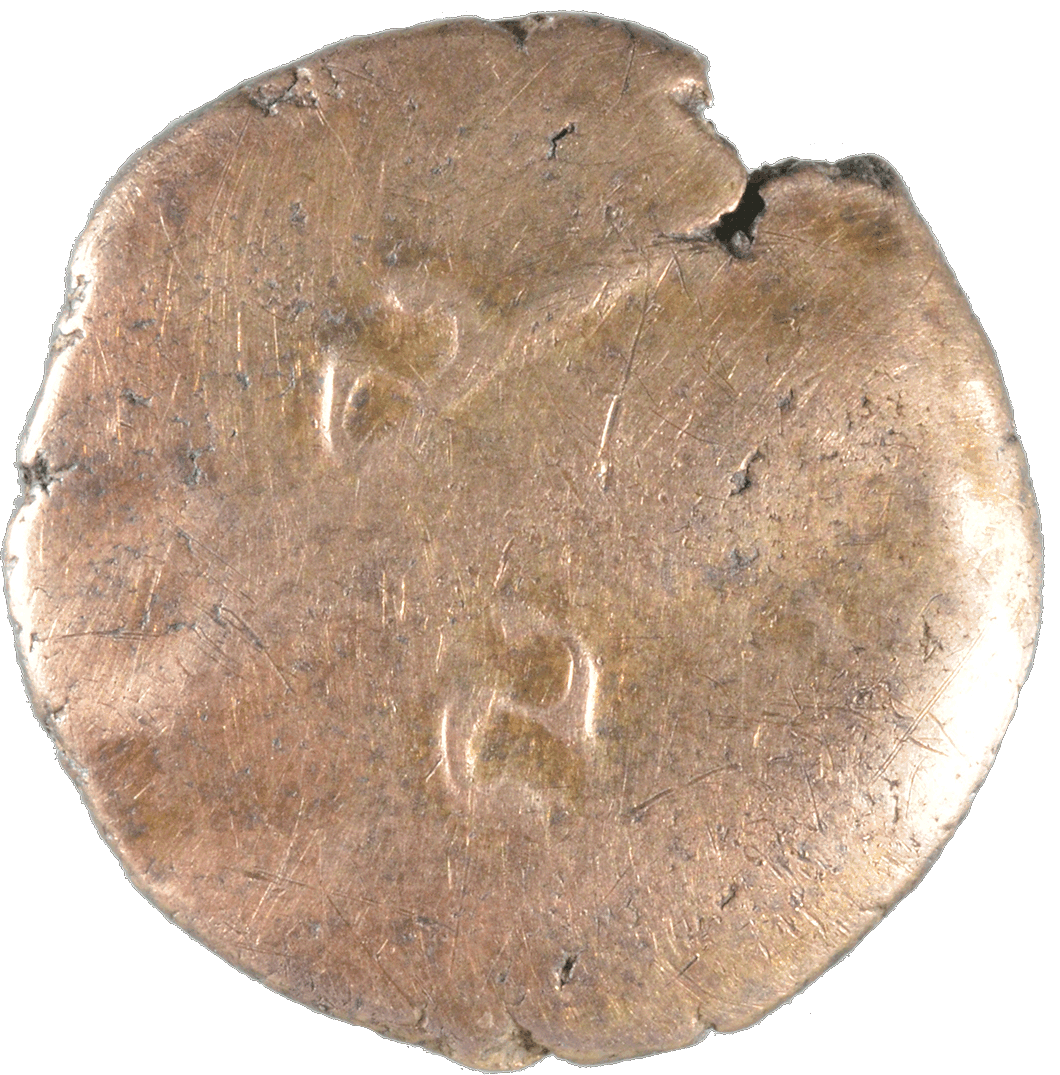  | 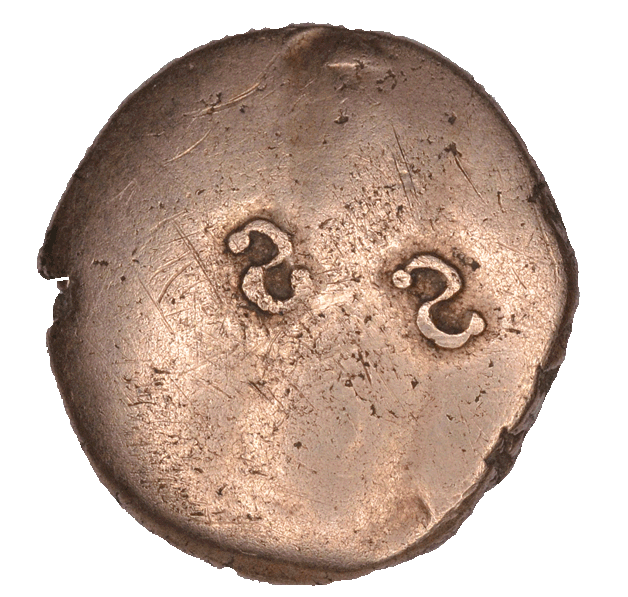  |
| Coin 8 | Coin 18 |
Nobody is sure what the double SS symbols meant although they are likely to refer to a local king or tribe. These coins are used to support the idea of the Cantiacian Kentish invasion of Essex as most of this type of coin have been found around Colchester and deeper into East Anglia. The horse image with “clumpy hoofs” is found in Kentish coins and not those of the Essex based Trinovantes tribe. Archaeologist Dr John Sills believes the “SS” may refer to the Segontiaci (meaning “people of the place of strength”) who were mentioned by the Romans as a tribe who surrendered to Julius Caesar in 54BC and suggests that this was the name the breakaway Kentish tribe gave themselves. You can see some hidden images in these coins such as possible faces, crescent moons, a wing motif (coin 18) and other patterns. It is thought these coins were minted between 60-25 BC.
Coins 5, 6, 7, 13-17. The Addedomarus Staters
and Quarter Staters
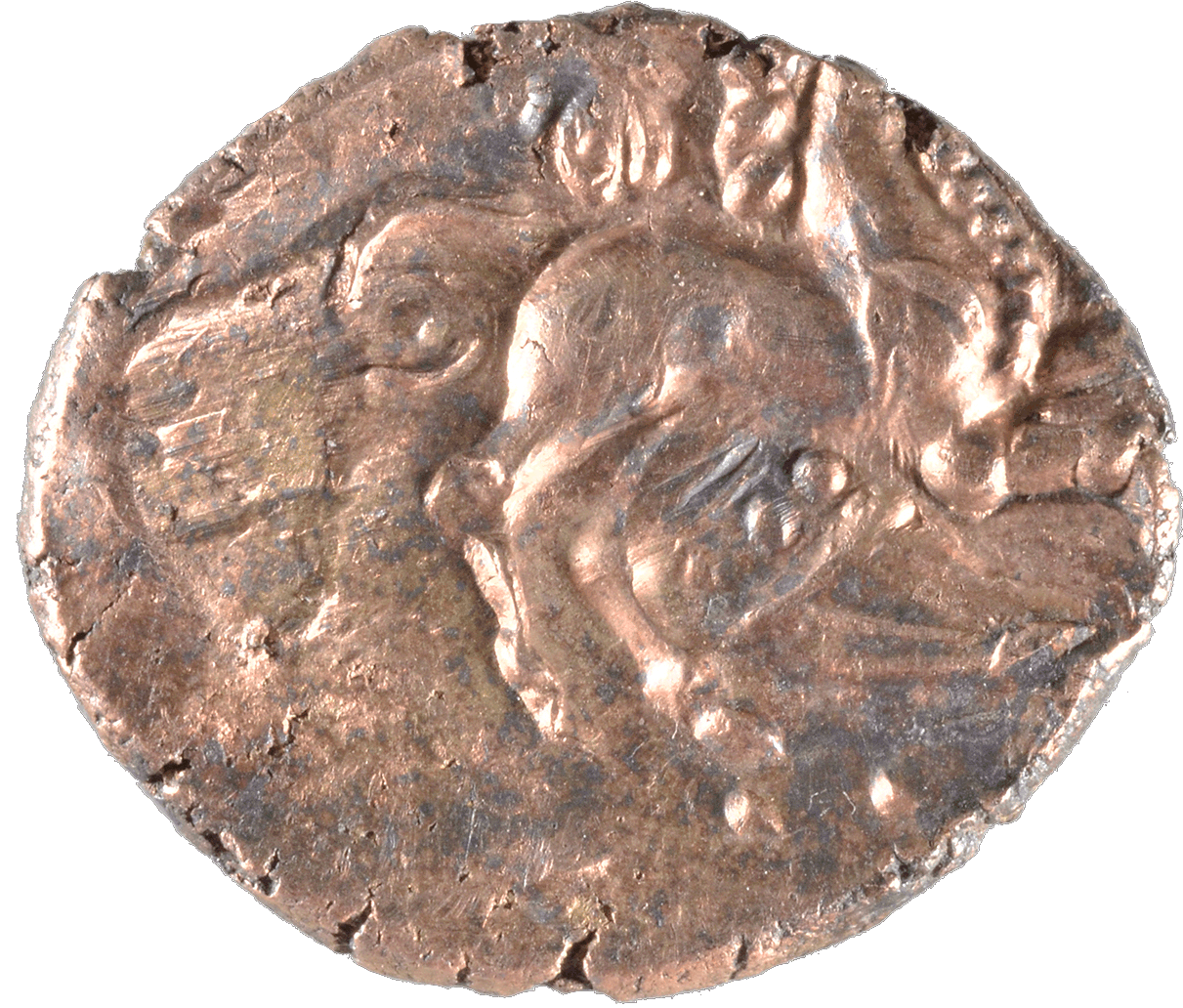 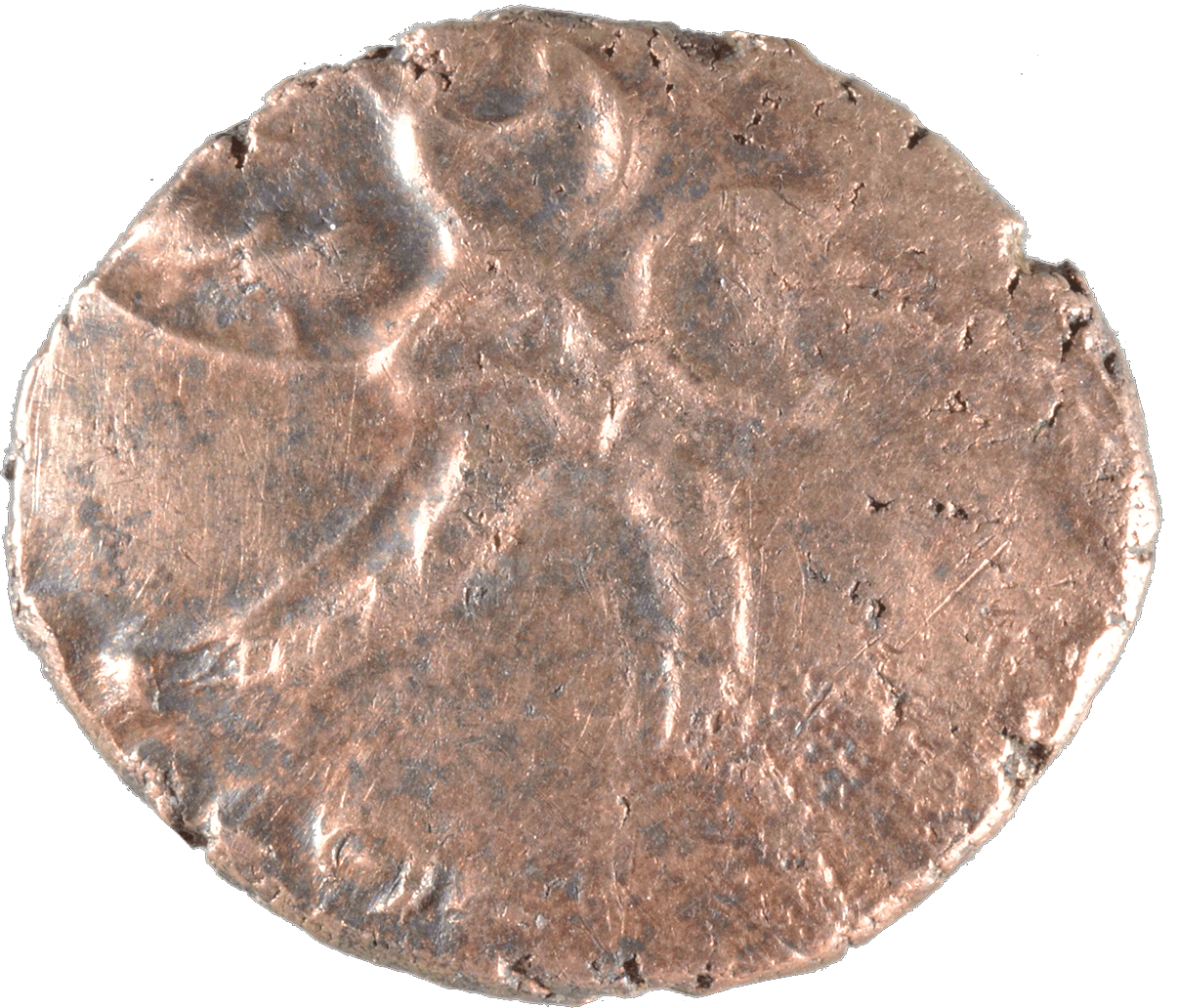 |  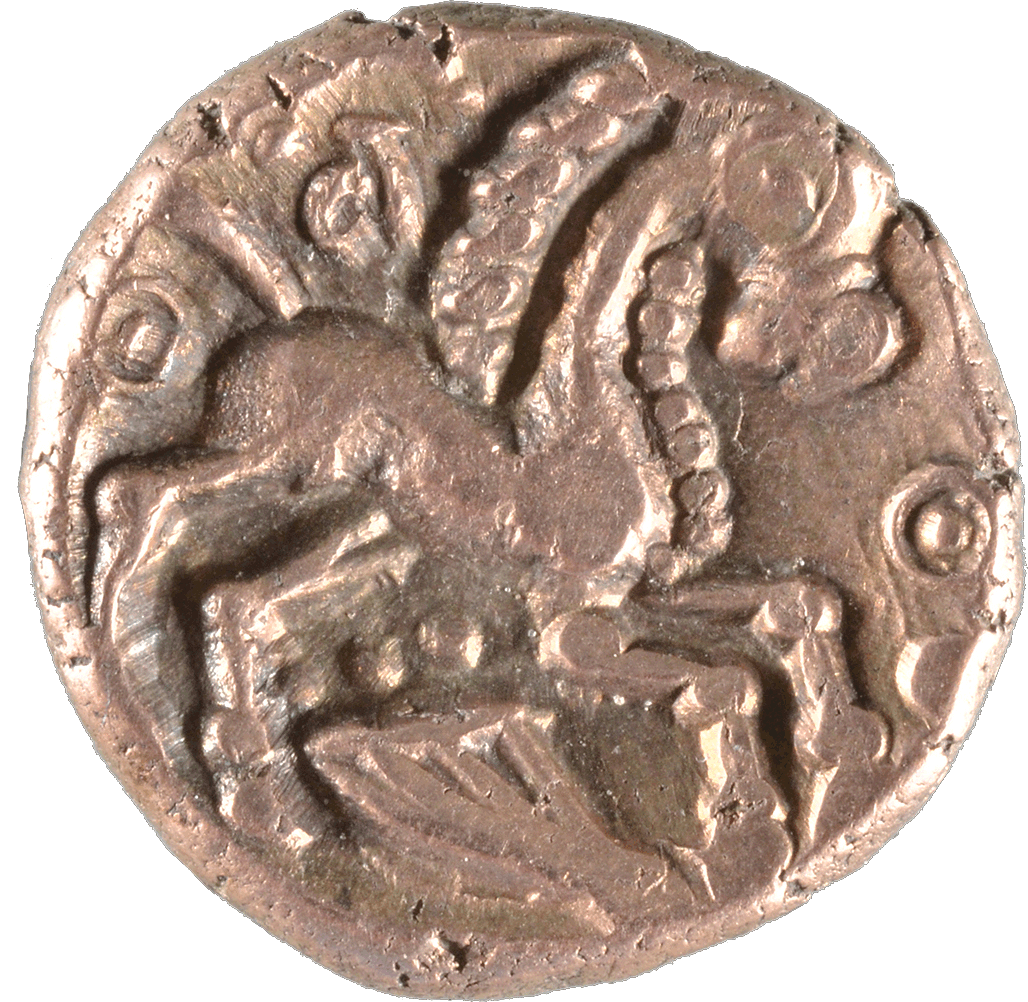 |
| Coin 5 | Coin 6 |
  |  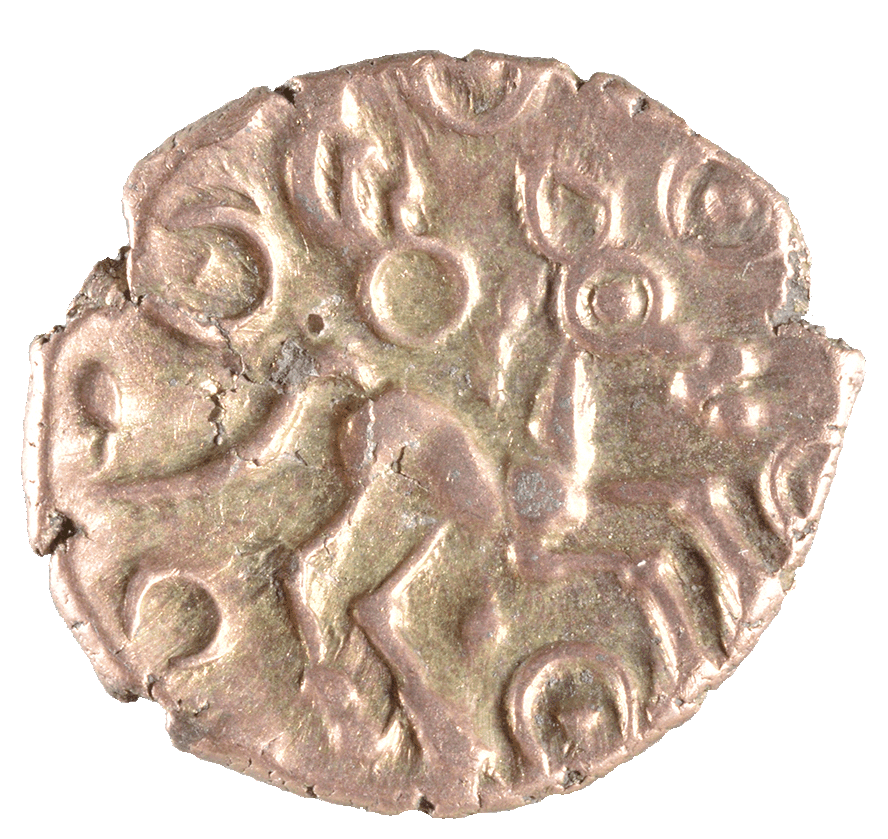 |
| Coin 7 | Coin 13 |
 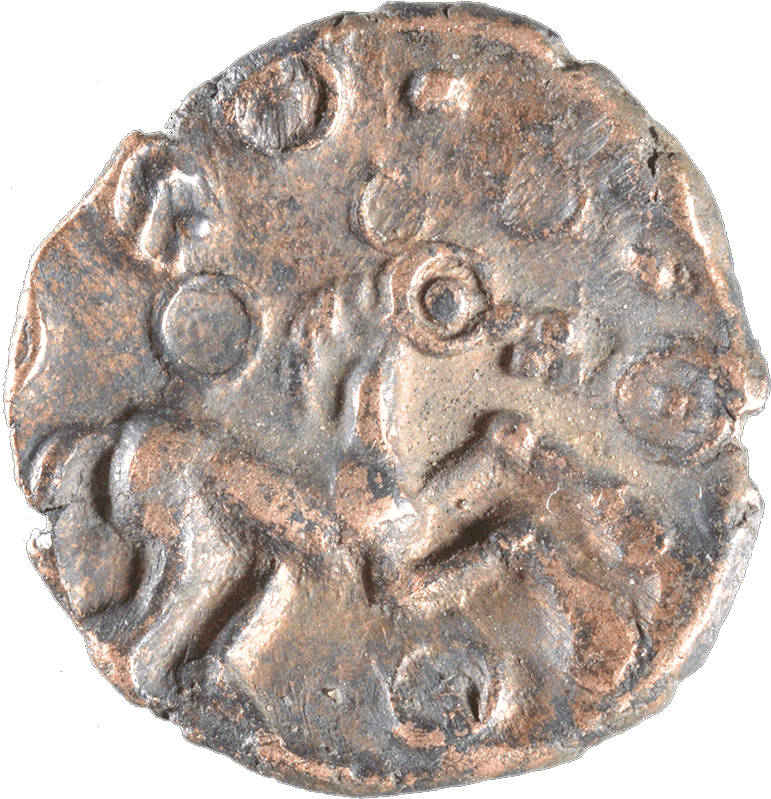 |  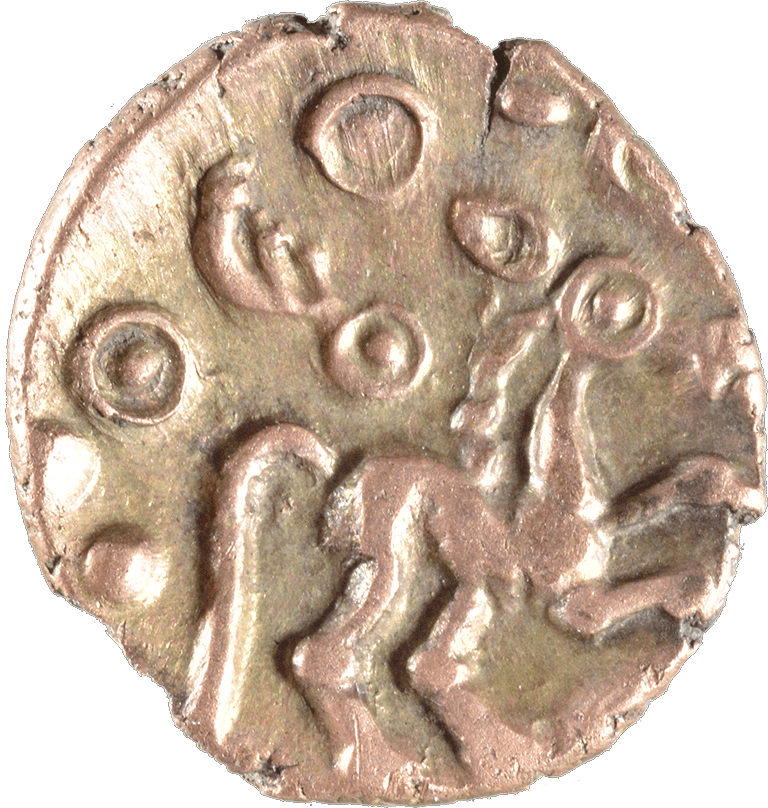 |
| Coin 14 | Coin 15 |
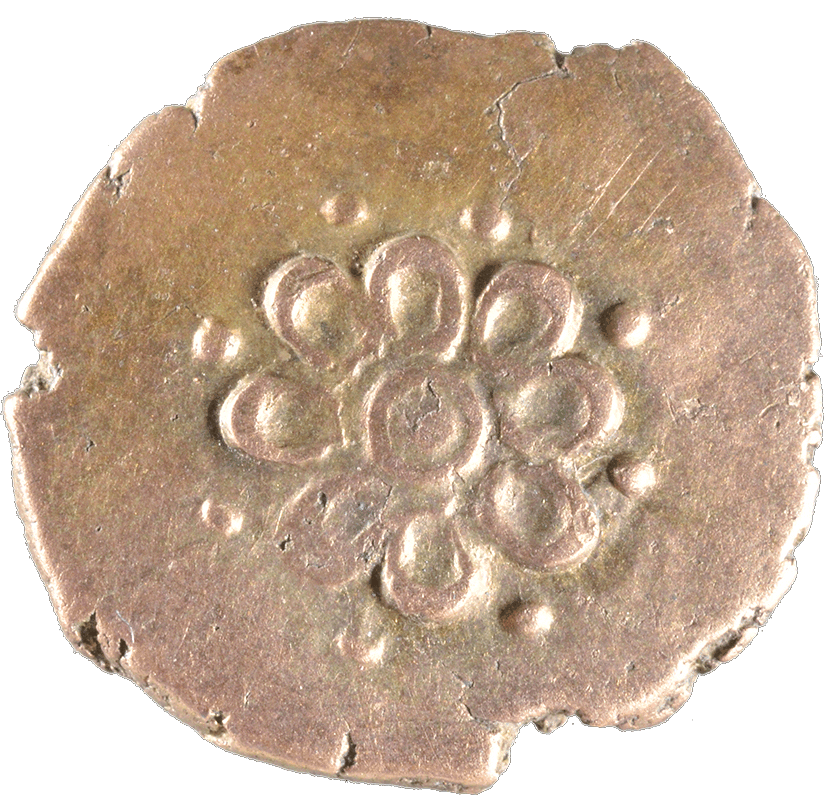  | 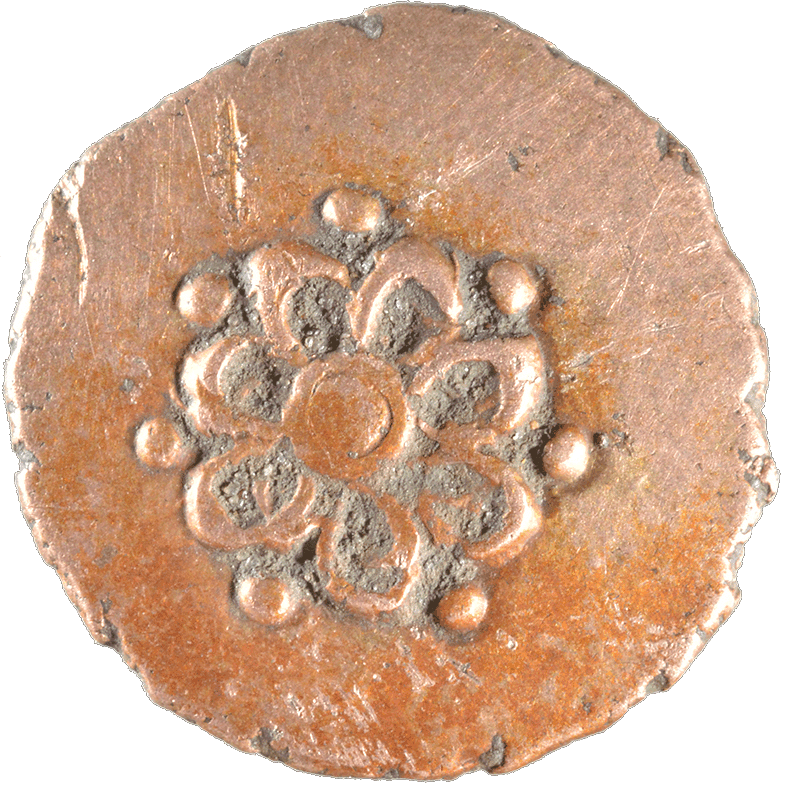  |
| Coin 16 | Coin 17 |
Although unscribed, these coins are very similar to others that are that are scribed to one King Addedomarus. Who was King Addedomarus? We know next to nothing about him apart from the coins he minted. It is thought he was a king between 35 and 15 BC. The distribution of his coins suggest he was King of the Trinovantes in Essex although others have suggested he may also have ruled over the kingdom of the Catuvellauni to the west of Essex. His name possibly means “Addedo the Great” although others have suggested it means “Good with chariots”. We think he may have temporarily lost his kingdom to a character called Tasciovanus (‘Strong as a dog”) and that he had a son called Dubnovellaunus (“Killer of badgers’)
It is thought it may be Addedomarus who was buried in the Lexden Tumulus, the best known of many pre-Roman graves found in the Colchester area. Here, between 15 and 10BC, in a pit beneath a large, circular mound, a mature man was buried, surrounded by many luxurious objects of both Celtic and Roman origin. They included bronze figurines, a suit of chain mail, silverwork and goldwork, and a small medallion of the Roman emperor Augustus dated to between 19 and 15 BC – presumably a mark of Roman favour.
Finding these coins of King Addedomarus in North Suffolk is very rare
Coins 5, 6 and 7
All coins display the horse motif although Coin 7 is not struck properly but contains a wheel. There are also “hidden faces” within these coins. The obverse display a spiral type image (coins 5 and 6) and a crescent and cross (Coin 7). The spirals may contain flowers or grains of wheat or barley images (brewing?). The meaning of these images and patterns is obscure.
Coins 13-17
All these coins contain a daisy wheel/flower image, plus the normal horse images, with hidden faces and other possible symbols. Again the meaning of the flower and the other images is obscure
Coins 3-4, The Freckenham Cross Staters
 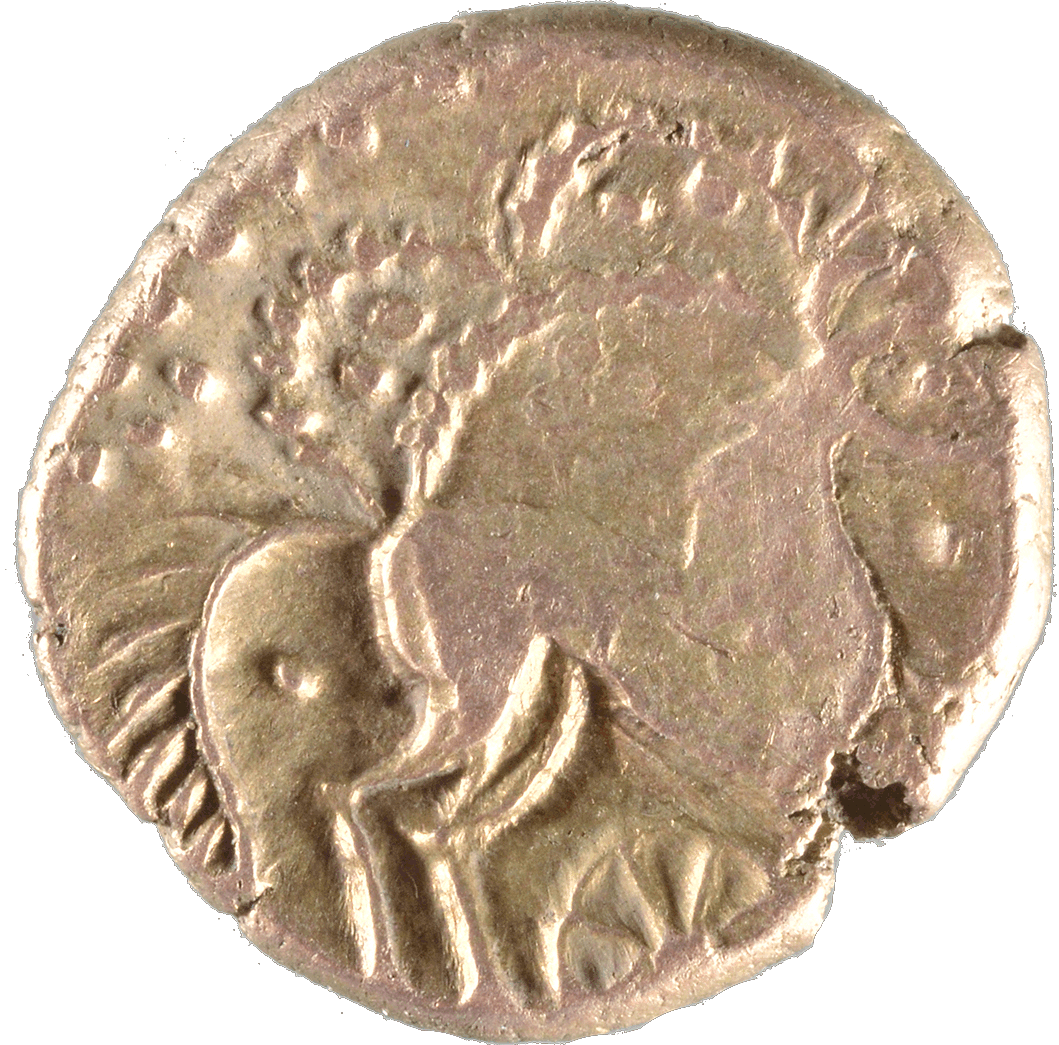 |   |
| 3 | 4 |
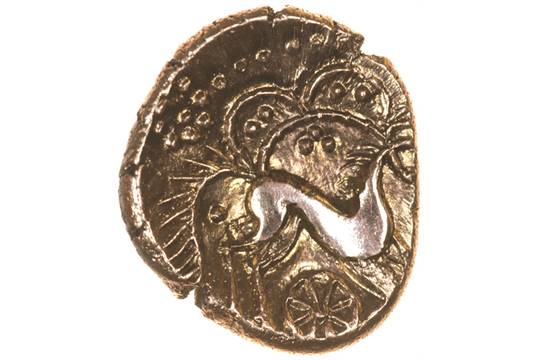 |
| Another example of a “Freckenham Cross” showing clearer image of “comet” |
So named after a hoard of 90 gold coins found in Freckenham , West Suffolk in 1895, the cross referring to the symbols on one side of the coins. These are thought to be Iceni coins. The “cross” on Coin 3 seems more like a dotted “T” shape. Are these just patterns or what did they represent? Coin 3 displays some wonderful “hidden faces” and a mis-struck horse and more strange dots that look a little like a comet. This can be seen more clearly in the picture of a similar Freckenham cross coin. Interestingly Halley’s Comet was visible in 12BC and it is thought these coins were minted between 20BC-20AD. Coin 4 displays a horse a wheel and more hidden faces. Most interesting is the image emerging above the horse’s back. Is it a face with a crown, or perhaps the sun or fragments of writing?
Coins 9-10 The “Mossop Mystery” Quarter Staters
 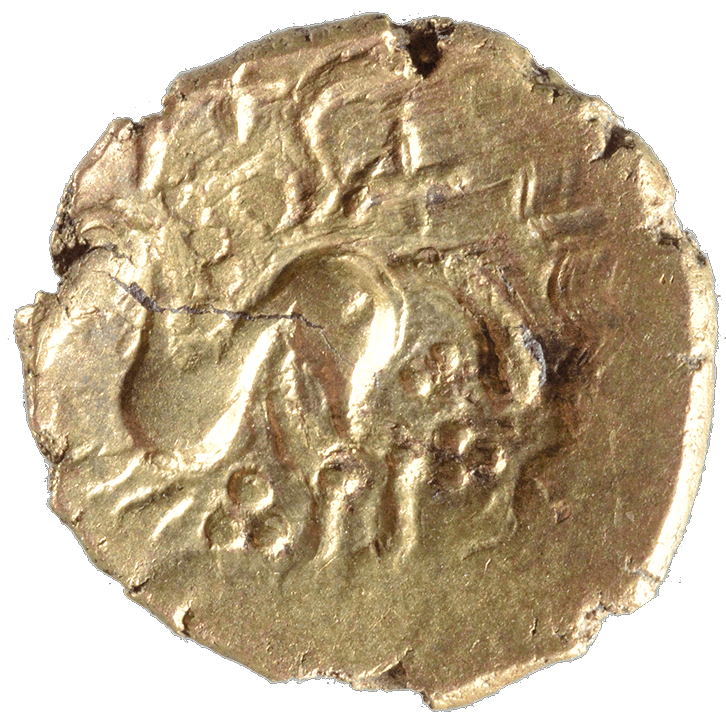 |   |
| 9 | 10 |
Named after Henry Mossop a noted collector and numismatist who was the first to identify this type of coin. These are excessively rare: There is one in the British Museum and another found near Bungay was sold in 2015. The reverse of this coin is different to the one in the British Museum. They are thought to date from about 20 BC to 20AD, and that they were a small local issue. The Mossop Mystery has an S-shape between its two crosses above a horse. The other side of the coin has eyebrow patterns or two crescents, or maybe it’s part of a wider ‘face”. Nobody is sure which is why they have the “mystery” tag attached to them.
Coin 11 The “Mildenhall Mystery” Quarter Stater
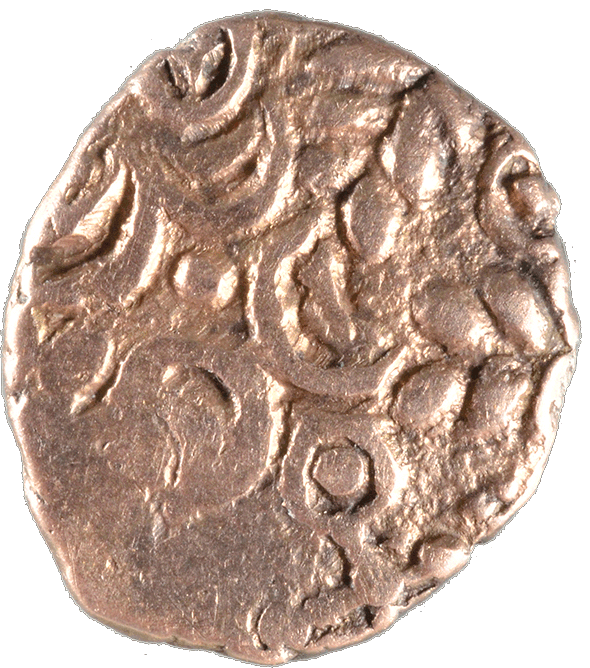  |
| 11 |
This is a very rare coin, there is only one other known example found at Mildenhall. Even the British Museum has no example of this coin. A horse is surrounded by multiple pellets and the design on the other side of the coin is obscure, but faces, “eyebrows” and other patterns can be distinguished. It is thought to date to between 20BC-20AD.
